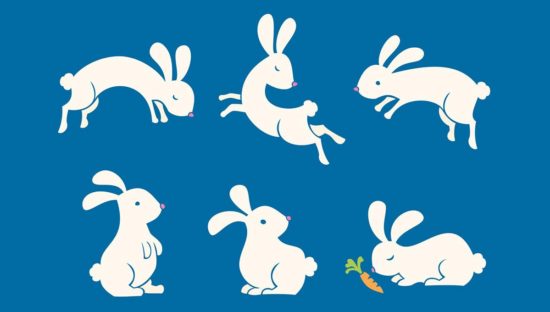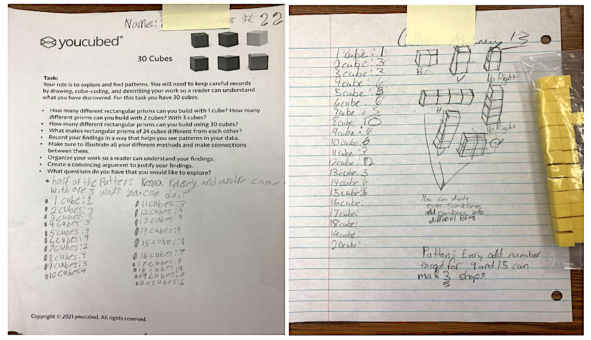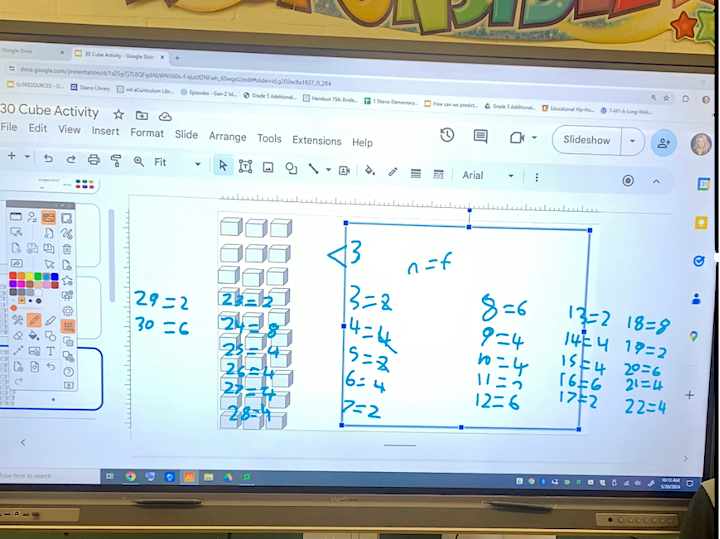Math Explorations to Engage Your Students
By Kathleen Palmieri
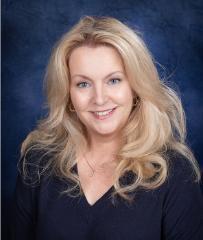
In past articles I have shared my research and fascination with the work of Dr. Jo Boaler, author, professor and co-creator of Youcubed.org. In my articles Teach Math by Diving Deep Into Real Data and Number Sense Builds a Strong Math Foundation I’ve shared what I’ve learned from Dr. Boaler and how I’ve incorporated math activities, data science, and number talks into my math classroom.
For all of us not quite out of school yet, here’s some more of what I’ve found!
The bunny hop
The end of the school year is a great time to use activities that allow students to discuss, guess, share strategies, and talk through problem-solving in math. To engage students in a fun number sense task, I’ve had my students use the Youcubed activity Leo the Rabbit where students are given the task to find how many ways Leo can hop up 10 steps. (Leo can only hop up 1 or 2 steps each time he hops.)
This activity incorporates exploration and number sense and is highly engaging as the students find themselves in a bit of productive struggle. The math discussions are incredible and students demonstrate some excellent number sense skills in their problem solving. If you’re already out of school, save this engaging activity for fall!
A cuboid expedition
Most recently, I had my class dive into the 30 Cubes activity. This is one of my favorite end-of-the-year things to teach as it is all about math exploration. As stated on youcubed.org,
“This task is intended to support students building their own identity as a mathematics explorer. They will generate their own data and look for patterns within a sequence. They should work to determine ways to organize their findings so they can make convincing arguments and conjectures. Students are asked to think in cubes by building, drawing, and quantifying their results. How many different rectangular prisms, which Jo calls cuboids, can you make using 1 cube, 2 cubes, 3 cubes and onwards to 30 cubes?”
I have used this activity several times in the past, and each time I am amazed at the conversations and the diversified ways students worked to build the rectangular prisms with a certain amount of cubes. I always started with a “Notice and Wonder” as suggested by Youcubed.
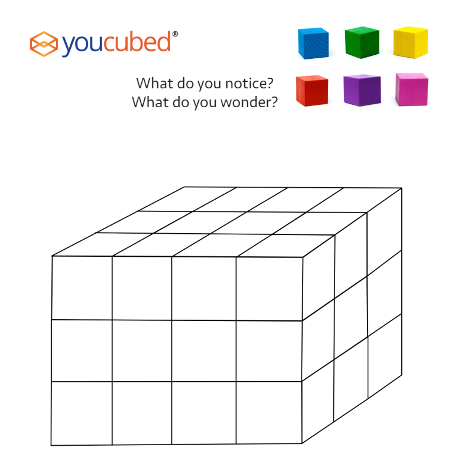
Once ample time was provided, my students were excited to present their findings in terms of patterns, number sense (discussing prime and composite numbers!), how they manipulated the cubes, and how some used the volume formula in their exploration.
One group (shown on the slide deck picture below) explained a pattern they found in their data – all the prime odd numbers created two, except for numbers 9 and 15.
As groups presented, students asked questions and shared thoughts. It was a wonderful math discovery session that engaged all students. The best part was that no student was hesitant to share as they weren’t afraid of being wrong. It was fascinating to see the diagrams, building, computation, and overall thought process that went into this activity.
A summer read for math teachers
I recently wrote a book review of Jo Boaler’s latest book, Math-ish: Finding Creativity, Diversity, and Meaning in Mathematics. This book is written in a conversational tone and easy to enjoy. I read it in two days and walked away with more ideas to boost my math practice. My other articles, previously linked above, also reference Dr. Boaler’s work, with links to guide the reader to her papers and books.
Learning by doing and discussing
Providing math activities is a great way to instill a love of math and exploration in students. I truly believe the student learns more by doing and discussing than any rote operational assignment. Youcubed.org and Dr. Jo Boaler’s work offers so much enhancement to my math classroom, and I highly recommend math educators check out these resources.
I hope you’ll read and try some of the activities I’ve mentioned. Please let me know what you think, and whether you’ve used any of the activities from youcubed, either in the comments section below or by writing me at kathiepalmieri@gmail.com. I look forward to your thoughts and ideas.
Kathleen Palmieri is a National Board Certified Teacher and NBCT Professional Learning facilitator. She is a fifth grade educator in upstate New York who reviews and writes regularly for MiddleWeb. With a passion for literacy and learning in the classroom, she participates in writing workshops, curriculum writing endeavors, and math presentations. As a lifelong learner, Kathie is an avid reader and researcher of educational practices and techniques. Collaborating with colleagues and globally on X (formerly Twitter) and expanding her education adventures at www.kathleenpalmieri.com are ongoing practices.

